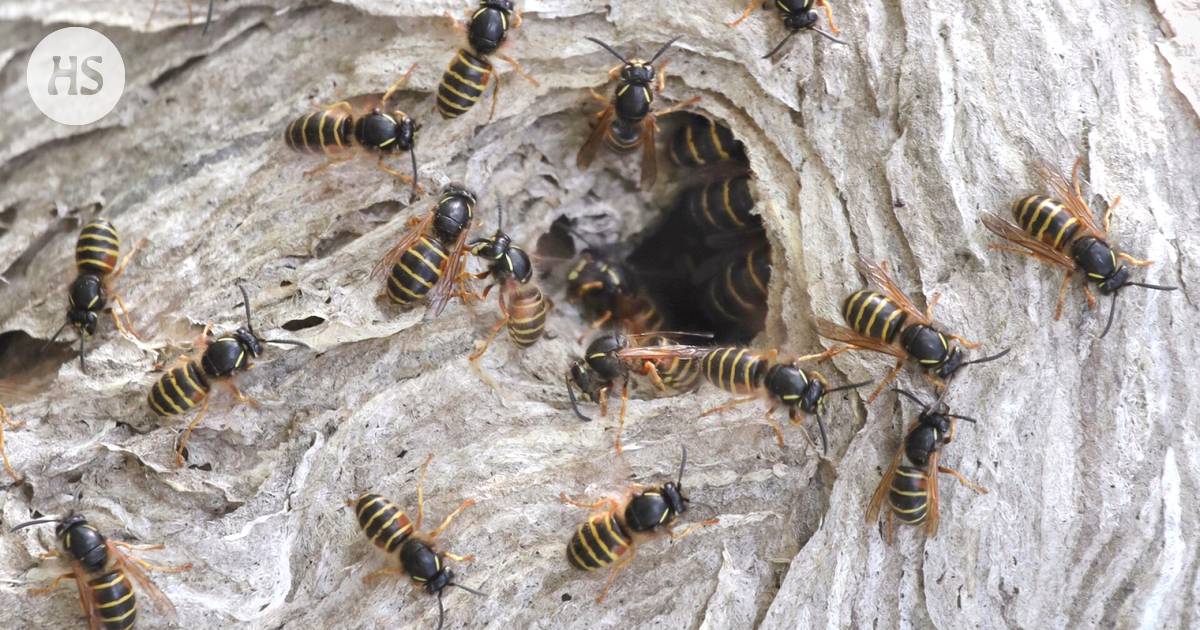Nature|If you decide to destroy the wasp nest, it should be done soon. It is worth noting that wasps can stay in the old nest site.
Late spring and the beginning of summer are the time when wasp queens look for a place to nest.
How can you prevent the nest from ending up in the corner of your own house?
“Not really at all. The nest can be anywhere,” says the university lecturer in ecology at the University of Jyväskylä, who studies wasps Atte Komon.
According to Komonen, the study does not tell on what basis the wasps choose the exact location of the nest. Sometimes Komonen has also observed them in places that are obviously risky for birds, for example.
Mostly the wasp seems to seek a sheltered place, such as an attic, a birdhouse or a hollow tree. Buildings can possibly be patched up so that you can’t make a nest in them.
“If there is a shed, green room or other space with a ventilation opening, you can put a dense grate on it, where the wasps can’t get in,” Komonen says.
Man-made fake nests, on the other hand, have not been found to be of any use.
In practice the only way to affect nests is to destroy them before they grow large.
“Now it’s still easy, when at this stage there is no one else in the nest but the queen.”
Later, workers start to accumulate in the nest and the size of the colony increases. Komonen estimates that the first workers will hatch in southern Finland at the beginning of June. At least some of the species peak at the end of July.
The diameter of the nest expands from the size of a golf or tennis ball to several tens of centimeters. The largest nests Komonen has seen have been up to half a meter wide.
Especially later in the summer, nest removal should be left to a professional pest control. Janne Mettälä removed a wasp’s nest from the window sill of Porvoo Central Hospital in August 2010.
Destruction after, the queen can start building a nest in the same place.
“When, for example, birds destroy the nests, the queens start to continue with the old one,” says Komonen.
It is also very possible that even if the nest is no longer there, workers that have already hatched can stay near the old nest site.
“Even if the nest could be completely destroyed, half of the wasps are probably in the field. When they come back, they can stay where the nest used to be. Then they can cause more harm than if the nest were in place.”
”
“Destroying a large nest on your own is a significant safety risk for anyone.”
This one therefore, the researcher recommends considering whether destroying the nest is the best solution. It should never be done by an allergic person, and destroying a large nest on your own is a significant safety risk for anyone.
Emotional wasps are also a significant part of the ecosystem. They can be useful to humans.
“Especially if there is gardening enthusiasm, wasps are useful by eating pests.”
Now nest building is at hand, but in the late summer and early autumn it is again expected that wasps will come close to people in search of food.
“The closer we get to September, the natural food starts to run out and the nests disintegrate, so more workers come among humans.”
Then you should be careful about serving wasps. No food or leftovers should be left exposed.
“Wasps quickly notice a fish, for example. Based on the experiment, the first wasp arrives in 10 seconds at best.”
